Tea, whisky and a sip of serendipity
Updated: 2015-12-11 14:23
By Cecily Liu(China Daily USA)
|
|||||||||
A great-grandson of European drink importers made a discovery in an Asian bar and started a business based on what he found
Paul Benjamin says that he stumbled onto the idea of mixing tea with whisky a few years ago in a bar in Tokyo, and the sudden inspiration prompted him to set up the bottled tea brand Benjamin & Blum.
The brand, which sells luxury bottled tea, is meant to be mixed with whisky, and was launched in both Hong Kong and London this year. It's already popular with retail outlets such as Hong Kong's luxury Lane Crawford store.
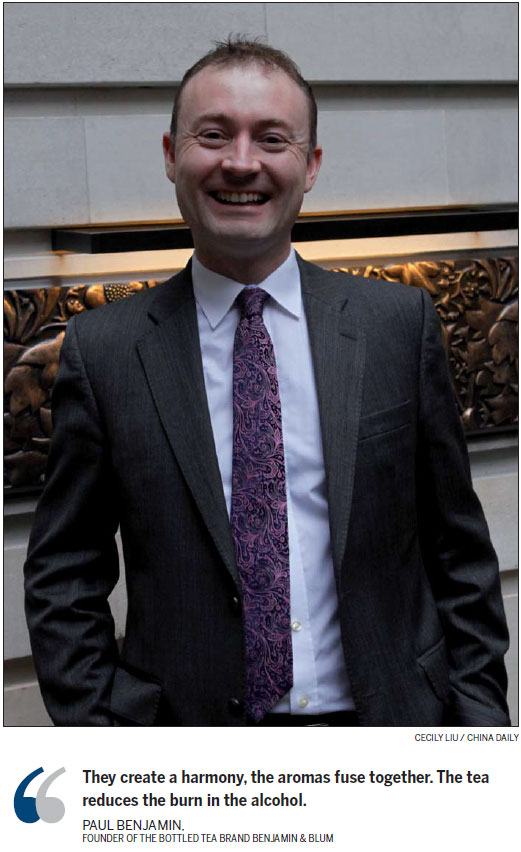
Sitting in London's Rosewood hotel, Benjamin reflects back to Tokyo. "It was in a tiny little whisky bar which you don't see anywhere else, but Tokyo is full of them. It had about 10 seats, and a cozy atmosphere and amazing selection of whisky."
The bartender asked if he had wanted to try something different, and then suggested whisky with green tea. "I said, wow, this is great, so I can see what the fuss is all about."
Although mixing green tea and whisky is still an unfamiliar idea in the West, and anathema to the average Scot, in Asia it is already popular amongst whisky lovers. The green tea takes the edge off the alcohol and softens the whisky, and is favored by Asian drinkers who often find whisky too strong.
"They create a harmony, the aromas fuse together. The tea reduces the burn in the alcohol," says Benjamin.
Benjamin & Blum has two bottled teas, which are Darjeeling Bai Mu Dan (white peony) from India and oolong from New Zealand. The company, in selecting a third tea, is considering China as the source.
Benjamin says his team typically looks for small farms that handpick their tea. The special attention given to the tea is key, as this allows his staff and the tea farm to achieve suitable quality.
Benjamin, who was a lawyer before embarking on his tea and whisky adventure, has another reason to be in the drinks business.
He is the great-grandson of Marcus Benjamin and Frederich Blum, whose luxury food and drink businesses in Germany and Austria dated to the 1890s.
These two family businesses served high society in early 20th century Europe. Marcus Benjamin was a purveyor of delicacies in turn-of-the-century Berlin, while Friedrich Blum supplied exotic imported specialties, as well as teas and coffees, to the restaurants and grand coffeehouses of Vienna.
Sadly they were shut down by the world wars, but Benjamin grew up hearing many stories about his great-grandfathers' businesses and has always had the idea of reviving the business one day.
He said he did not want to do tea imports in the same way his great-grandfathers had done, because importing tea into Europe is much easier today. Instead, he wanted to do something different, but that still linked back to the family tradition, so finding teas that can be paired with whisky was the perfect solution.
"When I was young I always heard stories, and I thought how wonderful would it be to revive our family tea business. We tried to piece it together from photos and living relatives, but the story is difficult to trace back."
The bottled teas are brewed in the UK using ultrapure Scottish spring water, he says. In the brewing process, the tea makers have also added a touch of English starflower honey and a drop of orange from Valencia to create a balanced and complex drink that works in harmony with fine spirits.
Benjamin says the two teas can be paired with any whisky of the consumer's choice; normally the mixture would contain half tea and half whisky, but it is not an exact science. It can also be enjoyed with cognac.
The Darjeeling white tea from India is grown from an original Chinese tea grove, from tea bushes that Chinese settlers took with them to India. It is delicate and floral, and has notes of peach blossom.
In comparison, the oolong is rich with classic hay notes and a rich and lengthy finish.
Benjamin says that the teas are processed with special consideration for the whisky mixture, so consistency is key. The use of bottled tea differs from the freshly brewed tea he had in the Tokyo whisky bar, and makes it easier for consumers to enjoy tea and whisky at home.
He says the pairing of different teas and whisky is both an art and a science. "It is art in the sense you need broad intuition, but science in that once you've done the initial work, you ensure the consistency every time."
Some combinations work well and others do not, and Benjamin's staff has tried hundreds of selections of rare teas to find ones that work.
It is much harder to find green tea that works well compared with red tea, because green tea contains tannin and aged whisky also contains tannin so when the two are mixed, there can be a bitter sensation. So it is best to look for tea with low tannin to ensure more balance with the whisky.
Benjamin says that he personally likes the Darjeeling white tea with a lighter, floral whisky or a rich sherried Speyside, and the oolong with a whisky that has a good balance of smoky peat.
The brand has established itself in Hong Kong since its launch, and also has struck a supply partnership with many bars and restaurants in Hong Kong.
In London, the marketing strategy is very different, as the brand sells directly to individual customers because the route to market through retailers is more difficult to establish.
Although the tea and whisky concept is not yet widespread in the United Kingdom, Benjamin says it was actually once popular in Britain in the 19th century, during the time of Queen Victoria.
It is said that her servant John Brown introduced her to the concept by putting some tea in her whisky for her to try, and the rest is history.
This apparent historical tradition set by the queen is very little known in the UK today, but in Asia the concept grew, and tea and whiskey are popularly served in cocktail and karaoke bars.
A Scotch whisky that changed the perception of scotch in China using tea is the French company Pernod Ricard's Chivas Regal brand. The winning mix was Chivas Regal Green Tea, a sweet, jasmine-flavored drink that bows to Chinese tradition but sounds modern, not to mention its health connotations. The company invested heavily in advertising, themed parties and tasting sessions.
The drink made inroads into nightclubs and karaoke bars nationwide, and Pernod Ricard's contract outlets expanded "exponentially" from less than 200 in 2002 to 10 times as many a decade later.
Benjamin says his brand builds on this trend but is different in that it is mostly about mixing tea with more aged whisky, as Asian consumers start to enjoy aged whisky more.
Tobias Gorn, tasting manager at The Whisky Shop, located in London's Piccadilly, says the concept of mixing green tea with whisky has merit. He says the teas produced by Benjamin and Blum have balance, complexity and intensity.
"The flavor in the mouth is long lasting and fine tuned," adding that they are "able to keep up with the whisky taste and create a harmony without getting lost in the strong whisky flavor."
Gorn says he thinks Benjamin and Blum's products will find a market in the West, but it won't become a mass-market product. Instead, it is more suitable for whisky bars and fine dining restaurants, as something innovative and exciting, he says.
cecily.liu@chinadaily.com.cn
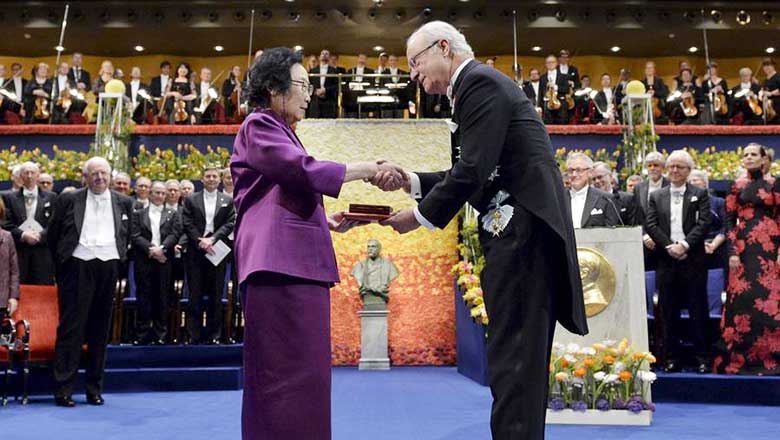
 Nobel Prize 'to spur TCM development'
Nobel Prize 'to spur TCM development'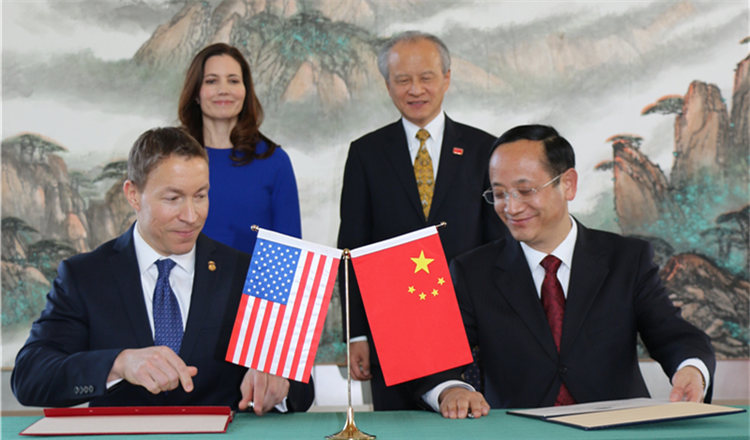
 US returns 22 recovered Chinese artifacts
US returns 22 recovered Chinese artifacts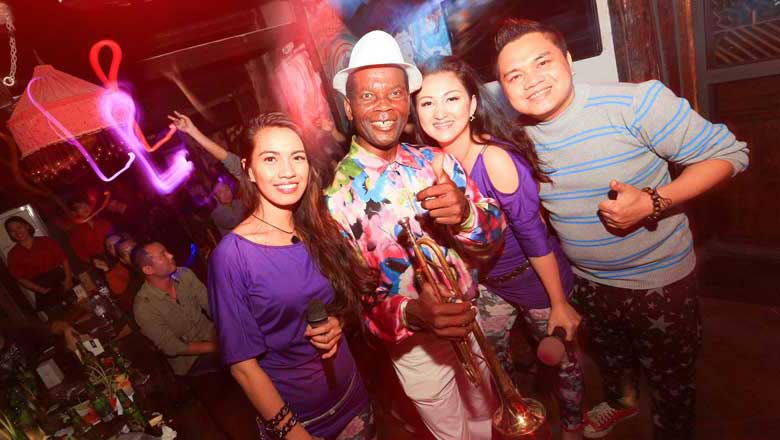
 Internet makes life in Wuzhen more convenient
Internet makes life in Wuzhen more convenient
 Miss World contestants at Sanya orchid show
Miss World contestants at Sanya orchid show
 AP photos of the year 2015
AP photos of the year 2015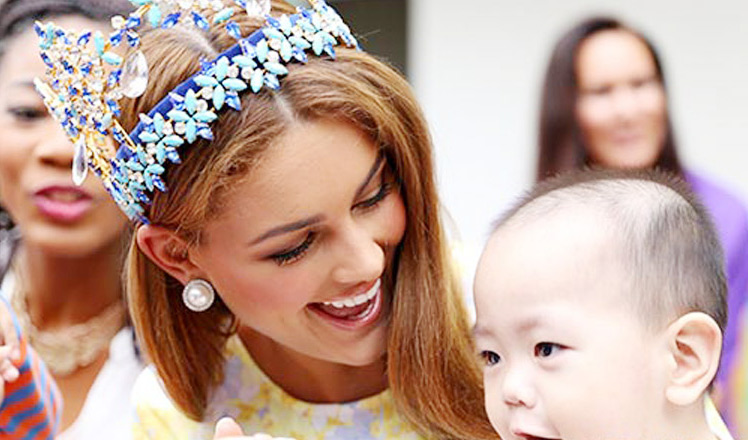
 Miss World contestants visit welfare center in Hainan
Miss World contestants visit welfare center in Hainan
 Giant pandas brave the cold by settling in freezing north
Giant pandas brave the cold by settling in freezing north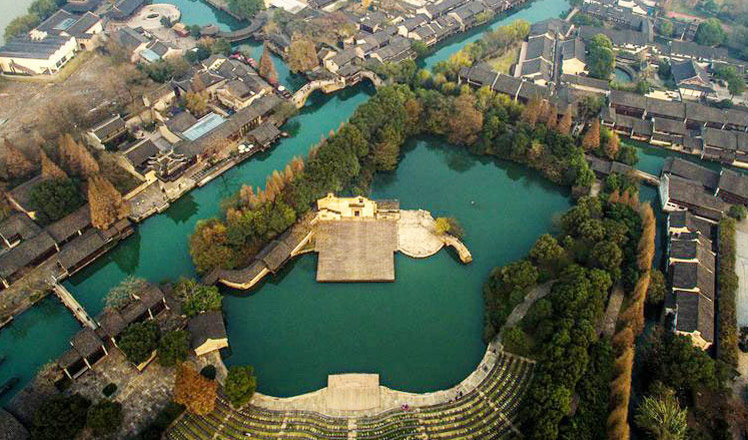
 World Internet Conference host Wuzhen: Charming water town
World Internet Conference host Wuzhen: Charming water town
Most Viewed
Editor's Picks

|

|

|

|

|

|
Today's Top News
Shooting rampage at US social services agency leaves 14 dead
Chinese bargain hunters are changing the retail game
Chinese president arrives in Turkey for G20 summit
Islamic State claims responsibility for Paris attacks
Obama, Netanyahu at White House seek to mend US-Israel ties
China, not Canada, is top US trade partner
Tu first Chinese to win Nobel Prize in Medicine
Huntsman says Sino-US relationship needs common goals
US Weekly

|

|








